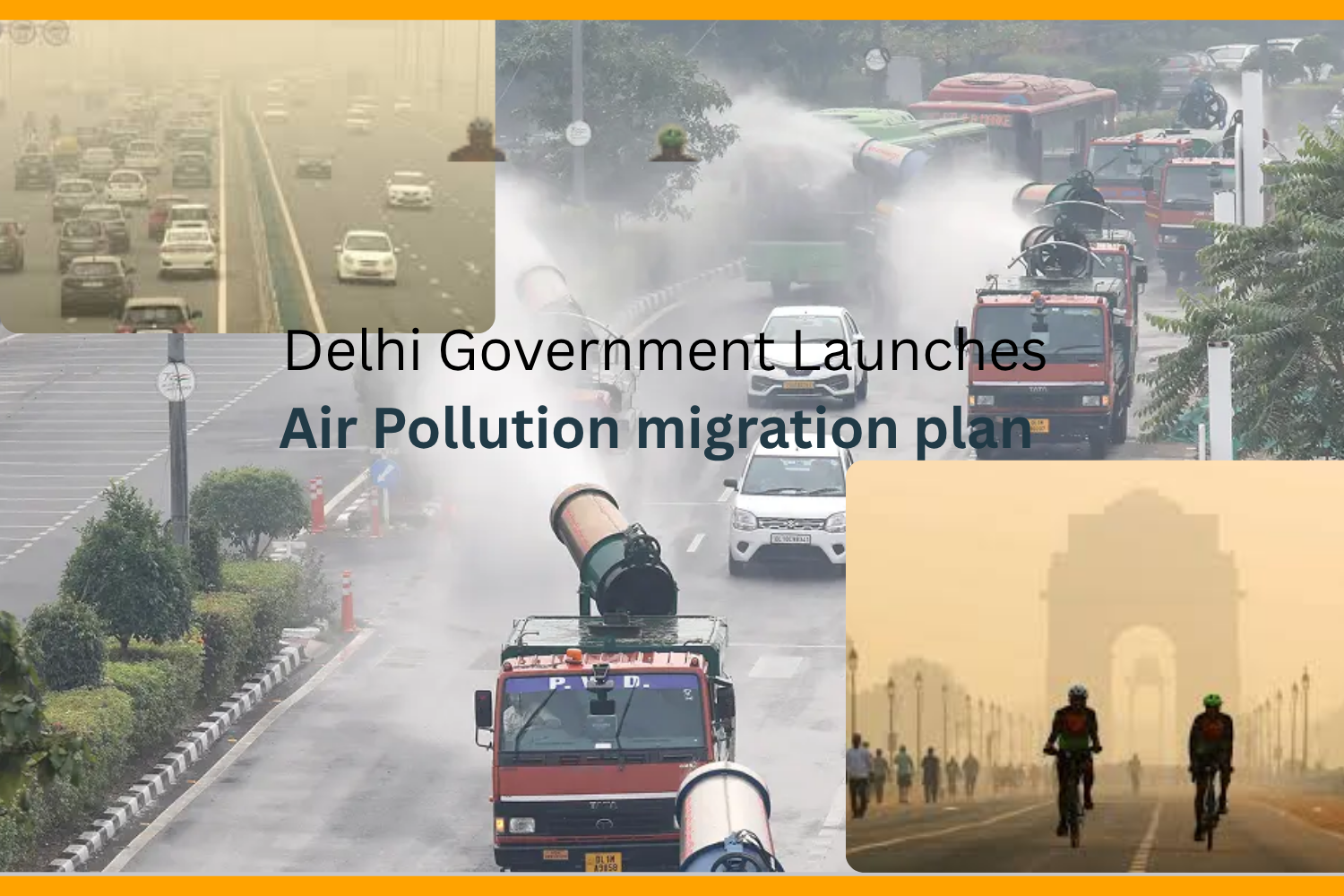What is the Newly Launched Air Pollution Mitigation Plan 2025?
Ankita
. 4 min read
The Delhi Government has taken a big decision to reduce Air Pollution in the Capital. The quality of the air in Delhi has long been a major issue. Hazardous pollution levels have been a problem for the city, particularly in the winter. In an important action to address the ongoing air pollution in Delhi, the city government has mandated the installation of anti-smog guns on all high-rise commercial, institutional, and hospitality buildings. Anti-Smog Guns Now Mandatory for High-Rise Buildings, Hotels, and Malls. This directive is part of the newly launched Air Pollution Mitigation Plan 2025.
The Delhi CM has also announced the installation of mist sprayers at 13 air pollution hotspots in the capital. From November 1, only BS-VI, electric vehicles (EVs), and CNG vehicles will be allowed to enter the capital.

What is the Newly Launched Air Pollution Mitigation Plan 2025?
The Air Pollution Mitigation Plan 2025 is Delhi’s 25-point strategy to reduce air pollution. It mandates the use of anti-smog guns on all large commercial buildings and high-rises. The plan includes artificial rain through cloud seeding, a crackdown on end-of-life vehicles, and a transition to electric public transport. AI systems will monitor construction sites, and electric vehicles (EVs) and sprinklers will be deployed citywide for dust control. The plan aims to create a cleaner, healthier Delhi using tech and strict enforcement.
Key Objectives of this plan
The primary aim of this plan is to reduce air pollution in Delhi, especially particulate matter (PM 2.5 and PM 10), by targeting dust and pollutants emitted from high-rise buildings, commercial complexes, malls, and hotels.
Key Objectives:
Combat Airborne Dust: Prevent dust particles from rising as a result of dry weather, vehicle movement, and construction activities.
Improve Air Quality: Lower (PM) Particulate matter levels in the city’s most polluted zones using water mist technology.
Promote Sustainable Urban Infrastructure: Make pollution control a built-in requirement for commercial and institutional development.
Ensure Year-Round Pollution Control: Operate anti-smog guns regularly (except during monsoon) to maintain consistent pollution mitigation.
Support Broader Clean-Air Initiatives: Complement other efforts under the Air Pollution Mitigation Plan 2025, including green mobility, vehicle restrictions, and pollution hotspot monitoring.
Key Announcements about the Air Pollution Mitigation Plan
Here are the key measures outlined in the Delhi Government's Air Pollution Mitigation Plan 2025, focusing on reducing emissions, controlling dust, and improving air quality:
Emission Reduction Measures
Only BS-VI, CNG & Electric Vehicles Allowed: As of November 1, 2025, Delhi will only permit the entry of BS-VI, CNG, or electric commercial vehicles.
Expansion of Electric Bus Fleet: Deployment of 200+ electric buses, to transition the entire public fleet to EVs by 2027.
Dust Control Measures
Mandatory Anti-Smog Guns: All commercial, institutional, and hotel buildings (above G+5 floors or 3,000 sq. m) must install anti-smog guns on rooftops.
Mechanized Sweeping & Water Sprinkling: Roads, especially major ones like Ring Road and Outer Ring Road, are to be cleaned regularly using mechanized sweepers and water sprinklers.
Artificial Rain ( Cloud Seeding)
Artificial rain (also known as cloud seeding) is indeed part of Delhi’s Air Pollution Mitigation Plan 2025, though it is considered a contingency or emergency measure, not a primary solution.
This method will be used during peak pollution periods, especially in winter months. Implementation will depend on favorable weather conditions and cloud availability. It is a temporary solution aimed at providing short-term relief when AQI reaches hazardous levels.
Greenery & Infrastructure
Green Belt Development: Large-scale planting of trees along roadsides and medians to act as natural air filters.
Vertical Gardens & Wall Creepers: Use of vertical green solutions on flyovers and public buildings to absorb CO₂ and dust.
Monitoring & Enforcement
Real-Time Monitoring: Use of drones, mobile labs, and AQI sensors to track pollution at hotspots.
Special Enforcement Teams: Anti-pollution units to look for violations of traffic laws, industrial emissions, and open burning.
Remote Sensing: Satellite and AI-based tools for identifying illegal activities contributing to pollution.
Waste Management
Construction and Demolition Waste Recycling Plants: Expansion of infrastructure to handle construction and demolition waste efficiently.
Legacy Waste Removal: Clean-up operations at major landfill sites to reduce toxic emissions and fire risks.
Conclusion
Basically, the plan is designed to tackle Delhi’s chronic pollution problem by combining infrastructure regulation with innovative technology for cleaner air. The Air Pollution Mitigation Plan 2025 reflects the Delhi government's strong commitment to combating air pollution through a multi-pronged strategy. From mandatory anti-smog guns and cleaner vehicles to artificial rain and public engagement, the plan focuses on both immediate relief and long-term transformation. While measures like artificial rain offer temporary solutions, structural reforms in transport, waste, and construction aim for sustainable air quality improvement. With timely action, Delhi moves closer to its goal of cleaner, breathable air for all.
FAQ
What are anti-smog guns and who must install them?
What role does artificial rain play in this plan?
Are only electric vehicles allowed in Delhi now?
More Stories from
How did India respond to Donald Trump's 25% tariff penalty on India?
Trade tensions between the United States and India have sharply increased as a result of this recent development. Know how India responds to Donald Trump's 25% tariff penalty on India.
Geoffrey Hinton's AI Warning: The Most Dangerous Invention Ever
AI is both beneficial and dangerous, depending on how it is developed, deployed, and regulated.
Unbelievable Facts about World History that will surprise you
Human history and the natural world are filled with mysteries, marvels, and strange truths that challenge our understanding. In this article, we will explore some unbelievable facts about world history.
Why skill-based hiring is gaining importance over degrees?
Skill-based hiring vs Degree, which matters first? what you can do” matters more than “what degree you hold.”
The Hidden Secret of the Great Pyramid’s exposed
With the development of scientific instruments and technology, each day, discoveries about the world are surprising us





